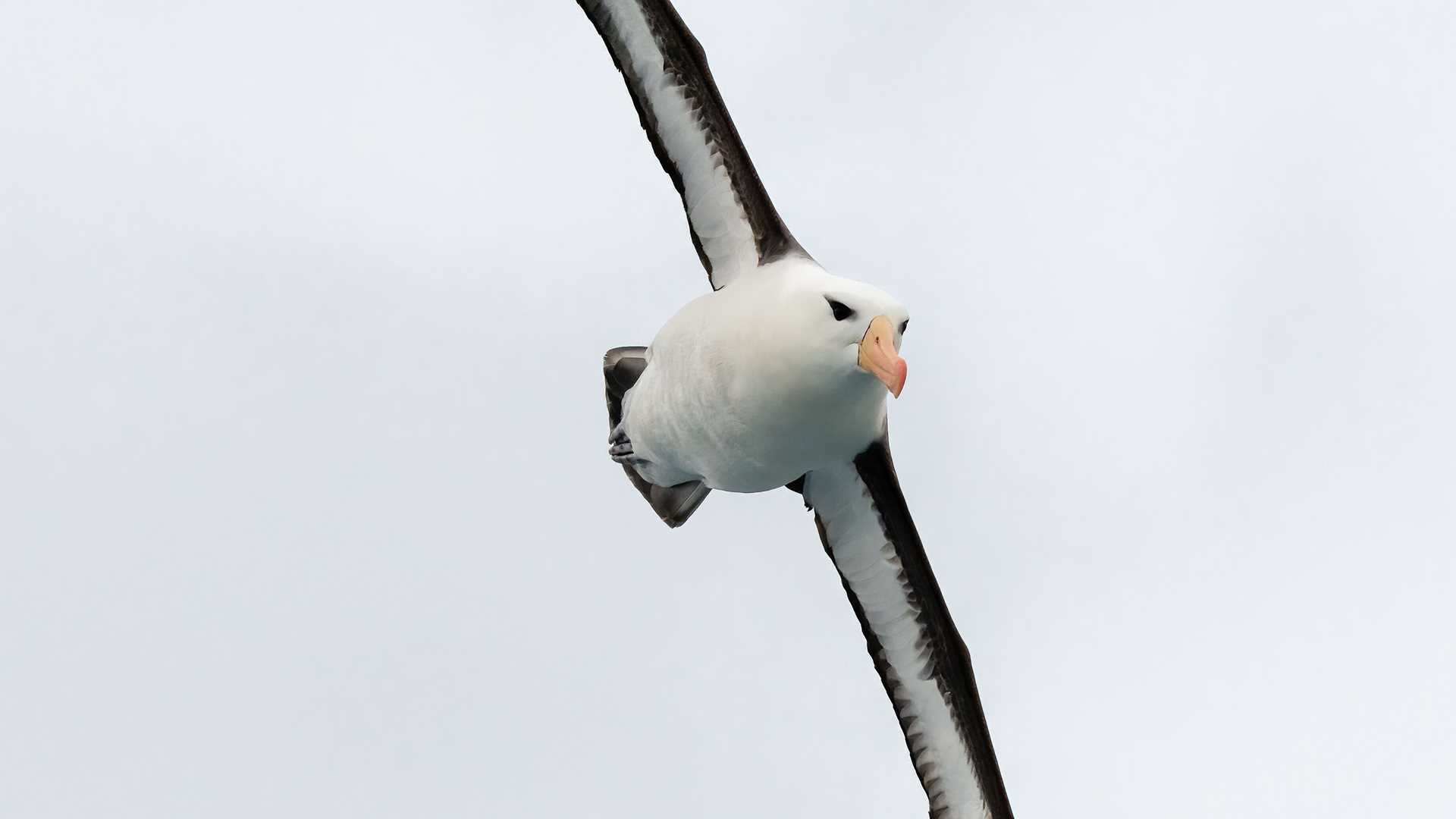As we went to bed last night, we all knew we would shortly leave the Beagle Channel and enter the Drake Passage. Not long before midnight, the waves of the passage began to rock us to sleep. We awoke to a perfect day, at least for the author, a bird-loving naturalist. At about 20 or 25 knots, the wind out of the west was stiff enough to produce excellent flying conditions for the pelagic seabirds that spend most of their lives in the windy, open waters of the Southern Ocean.
Immediately upon waking, we had spectacular views of six species of birds: southern and northern giant petrels, wandering albatrosses, southern royal albatrosses, white-chinned petrels, and black-browed albatrosses. Throughout the morning, everyone had a chance to view these massive, majestic birds that soar over the Southern Ocean with barely a flap of their wings. At some points, more than 15 birds were following National Geographic Explorer as we sailed south. They passed by at eye level on our upwind side, staring into our eyes as they flew. We looked on in awe as the largest birds in the world, the wandering albatross, smoothly glided past us with wingspans of up to 11.5 feet. Later in the day, we were joined by smaller relatives of the albatross: soft-plumaged petrels, black-bellied storm petrels, and blue petrels. These small birds flitted over the waves. Their movements appeared erratic to our eyes, which are unable to see the gusts of wind upon which the birds fly.
Throughout the day, we were lucky to have this diversity of birds follow us as they searched for food. We continued our push south towards the Antarctic Circle as the sun set on our first day.







